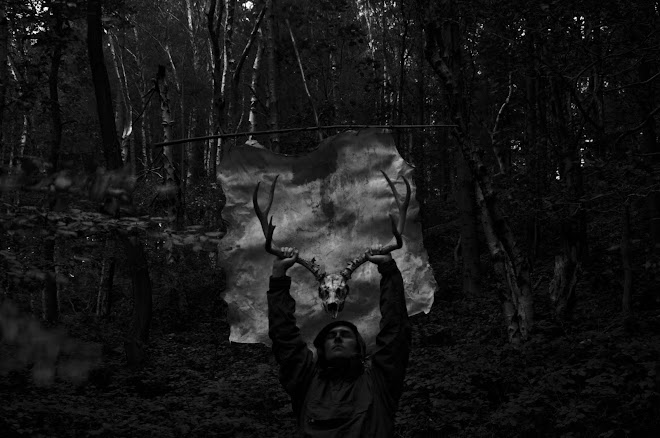
Many thanks for the support. Check out www.filthforge.org for more post-industrial/noise/drone information.
TENHORNEDBEAST
"Hunts & Wars"
Cold Spring - 2010 CD
Third full-length for the project of ex-ENDVRA Christopher Walton. Proceeding along the way of pitch black rituals and unsettling atmospheres, this time TenHornedBeast introduces some different elements, achieving more variety and catching the listener's attention much more effectively than in the recent past. We are introduced into the new CD by an excellent 12-minute assault bearing the title "Reaching For The Stars We Blind The Sky", a drone / doom wall of distortions with hammering and mechanical percussions strongly reminding of the best Godflesh, but, of course, without vocals and recognizable riffs. It's a cathartic and powerful piece, showing the definitive evolution from Walton's early electronic noises, of Cold Meat Industry-derivation, to a more contemporary and effective guitar-based inferno.
The short "Hilnaric" is just a gloomy keyboard interlude, placed right before another sonic mammoth probably in order to let our ears rest for a moment. Indeed, the following "Father Of The Frosts" is another deep chasm of suffocating sounds, between distant electronic mists, obsessive guitar drones and echoing cymbals. Another short intermission is represented by the looped dark horns and deaf beats of "Ironborn", whereas "I Am The Spearhead" returns to the familiar Northern industrial atmospheres of early BDN and Archon Satani, with an obsessive machinery rhythm and substrata of haunting keyboards. Its quality is unquestioned, even if its originality not at the top. The last short interlude, this time entrusted to the minimal and almost melodic "Cimmeria", then it's time for the final, monolithic assault, the title-track. The volume rises progressively, just like the noise generated by the guitar strings and drones. Being this outro extremely long (19 minutes!), it needs your whole concentration to be grasped in its deepest essence.
In a scene where things have got mostly static and inexorably repetitive, TenHornedBeast have made significant progress, incorporating sounds and elements of the drone / doom environment to unleash it into the underground caverns and hellish domains conjured by this British necromancer. Listen at high volume to achieve a total wrapping and drowning effect.
Simon V






































